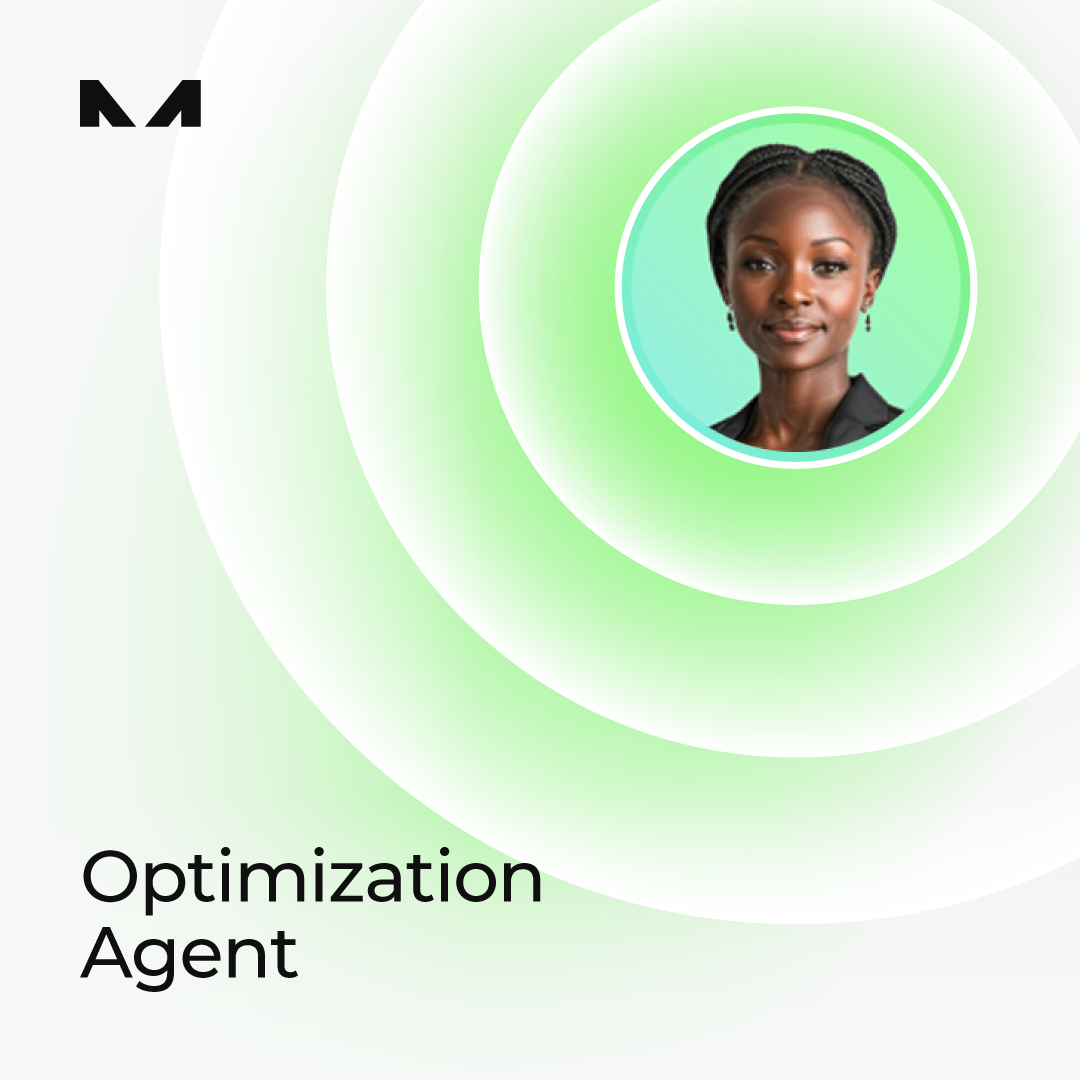The Role of Middleware, Insourcing and AI in your Digital Transformation Journey
Introduction
The key to thrive in the current MarTech scenario isn't about adopting every shiny new tool, but rather mastering three fundamental elements: training, process, and data. Federico Salvitti, our VP Growth US, cuts through the noise with a refreshingly pragmatic perspective for digital transformation.

Exploring the MarTech Battleground
With over 14,106 platforms and tools crowding the marketing technology (MarTech) space, decision-makers and marketing leaders are drowning in options.
This proliferation of tools and technologies, while offering unprecedented capabilities, has paradoxically pushed critical data further away from those who need it most.

In our latest article, Federico Salvitti, VP Growth US at MINT, uncovers why the real battleground for marketing success lies not in technology itself, but in how organizations empower their people, optimize their processes, and leverage their data for agile decision-making.
What are the battles to win along a digital transformation journey? Let’s find out.
1. People: The Army at the Front Line of Technology
The proliferation of marketing technologies and the need for agility and visibility have accelerated the need for successful digital transformation for brands that need to move from size to scale.
But one of the most fundamental aspects of digital transformation, often overlooked, is the significance of people training inside the companies.
Salvitti emphasizes, "The key to digital transformation, which is not yet thoroughly understood, is winning and controlling the training in an organization.
The first real call to the success of a digital transformation program lies in the people at the forefront of technology changes."
Training should not be platform-related, but workflow-related to be specific to organizational needs: companies must invest heavily in comprehensive training programs to ensure employees are well-equipped to understand their roles within the organization’s digital ecosystem.
A shared vision is the foundation for successful transformation.
2. Processes: The Battle for Efficiency
By breaking down complex workflows into manageable segments, organizations can address specific inefficiencies and integrate new technologies, reducing disruption.
This method not only enhances operational efficiency but also ensures that each team member understands their role and responsibilities within the digital framework.
“The second battle to tackle is the one with efficiency,” Salvitti explains.
Ultimately, winning the battle with process optimization means creating a more agile and responsive organization capable of adapting to the fast-paced digital landscape.
“It is important to apply a divide-and-conquer approach, tackling each process systematically to ensure a smooth and efficient digital transformation journey," says Salvitti.
3. Data: The Waging War for Smart Decisions
Data is the lifeblood of informed decision-making in the digital age.
Salvitti stresses the criticality of mastering data management, from collection and storage to analysis and strategic application.
"The third battle to win is the one with data."
Brands must prioritize the integration of the right number of data sources, maintain data quality, and establish robust systems to gain a comprehensive view of their marketing efforts. Effective data management involves not only consolidating information from diverse platforms but also ensuring its accuracy and timeliness.
"Data management is only as powerful as the decisions it informs. Building a robust data infrastructure is futile unless it actively drives strategic decision-making. True intelligence lies in transforming raw data into actionable insights that guide every business move." - Salvitti explains.

Leveraging Middleware for Agility
Once marketing leaders have addressed strategically the battles on training, efficiency and data management, the next step of the digital transformation journey involves agility and, ultimately, interoperability.
Achieving such interoperability across different platforms and tools often involves complex and time-consuming tasks, such as API mapping and maintenance.
These challenges can significantly hinder a brand’s ability to respond swiftly to market changes and optimize their campaigns effectively.
In this context, “middleware” solutions play a pivotal role in a company digital transformation path, according to Salvitti.
“Middleware” is a type of software that connects different applications, services, and systems, enabling them to communicate and work together effectively.
Middleware solutions that offer robust API integration capabilities that simplify the process of consolidating data from diverse sources into a unified system.
This not only reduces the time and effort required for API management but also ensures that all data is accurate, up-to-date, and readily available for strategic decision-making.
“Middleware solutions that excel in interoperability and offer comprehensive API support can drive digital transformation, enabling brands to focus on data for insights and actions rather than getting bogged down by the technical complexities of integration.” - Salvitti assures. “This holistic approach to data and workflow management ensures that the entire marketing ecosystem functions cohesively, leading to more agile marketing strategies”.

The Rise of In-Sourcing and In-Housing
While outsourcing has been a prevalent trend in recent years, Salvitti observes a growing shift towards in-sourcing and in-housing for brands.
The ongoing reliance on external vendors and agencies for marketing activities has fragmented processes and moved relevant data and information away from those who needed it most, marketing leaders.
Brands are now recognizing more and more the value of regaining control over their data and decision-making processes.
As Salvitti notes, "By bringing key marketing and advertising functions internally, brands can tailor MarTech solutions to their specific needs, leading to more efficient and effective marketing campaigns. In-sourcing and in-housing allow for greater ownership, flexibility, and control over the digital transformation journey, enabling brands to adapt quickly to changing market dynamics”.
In the context of marketing and advertising, insourcing and in-housing have different nuances, even if the two terms are often confused.
In-housing refers to the practice of bringing capabilities and functions that were previously outsourced to external vendors or agencies back into the organization. This means building and managing an in-house team to handle specific tasks of the marketing or advertising workflow.
Insourcing, on the other hand, involves using internal resources to perform tasks that could be outsourced to third-party vendors.
This does not necessarily mean creating new in-house departments but rather leveraging existing resources and capabilities within the organization to manage tasks.
Insourcing can include training current employees to take on additional roles or temporarily bringing in external experts to work within the company on specific projects.
Striking the Balance Between AI and Human Oversight
When addressing digital transformation journey, we need to involve (of course) AI in the conversation. AI is everywhere and MarTech tools and platforms — whether based on generative AI or enhanced machine learning — have saturated the market.
In response, brands and agencies are currently navigating this landscape using sandboxes — secure, isolated environments for testing — along with internal AI task forces and client contracts.
The integration of artificial intelligence (AI) and automation in marketing is a transformative development, but finding the right balance is essential in order not to add additional complexity and fragmentation to processes.
Salvitti advocates for a supervised AI approach, where human intelligence complements machine learning.
"While AI offers significant benefits in terms of efficiency and scalability, human oversight ensures campaigns remain relevant, effective, and aligned with brand objectives. By striking a balance between AI-driven automation and human expertise, brands can harness the potential of AI while mitigating risks and maintaining a human touch in their marketing efforts,” Salvitti says.
AI tools should not be viewed as external add-ons or supplementary enhancements.
Instead, AI must be ingrained as a default, native component of the technology stack. This integration ensures that AI capabilities are seamlessly woven into the fabric of marketing operations, from data analysis and customer segmentation to personalized content creation and campaign optimization.
This native incorporation of AI allows for a more holistic and agile approach, enabling marketers to respond swiftly to market changes and consumer behavior patterns.
Ultimately, treating AI as an intrinsic element of the tech stack elevates its role from a mere tool to a foundational pillar that underpins and enhances all aspects of marketing and advertising efforts.

Embracing a Holistic Approach to Digital Transformation
The journey of digital transformation in marketing is not solely about adopting the latest technologies or accumulating an array of MarTech tools.
It's about creating a cohesive ecosystem where people, processes, and data work in harmony, supported by intelligent middleware solutions and a balanced approach to AI integration.
As brands increasingly turn to in-sourcing and in-housing to regain control over their marketing operations, the importance of adaptable, interoperable systems becomes even more critical.
The future of marketing lies not in chasing every new trend, but in building a robust, flexible foundation that empowers teams to leverage technology intelligently, always keeping the human element at the core of their strategies.



%20MINT_642%20App%20Announcement.png)